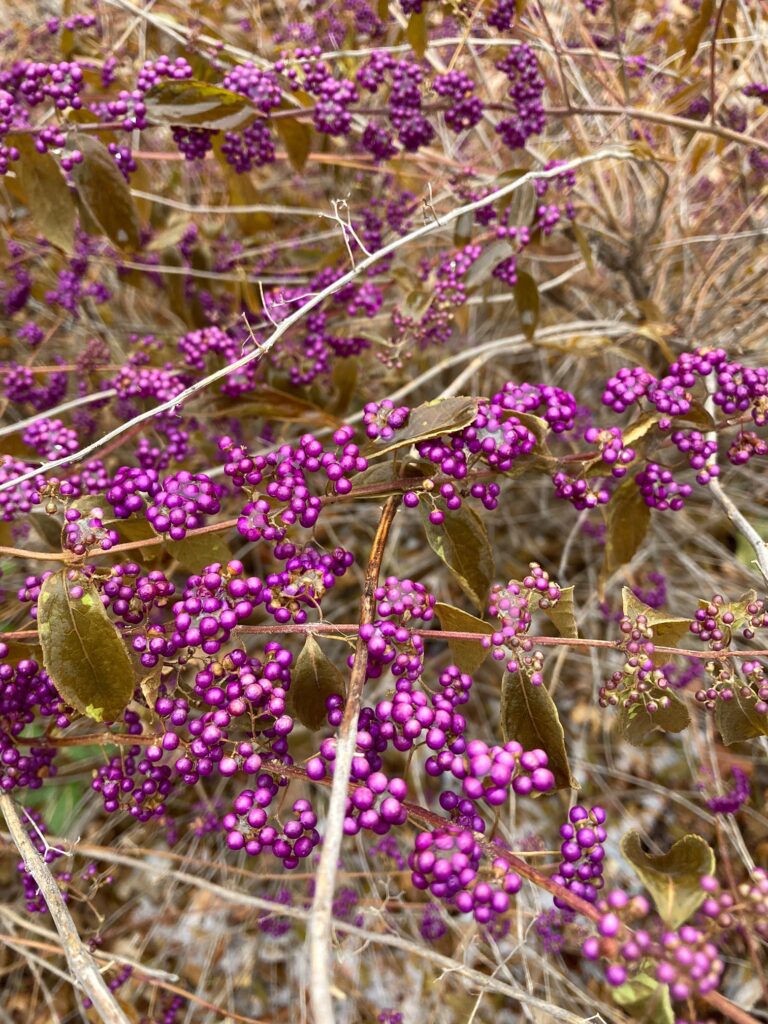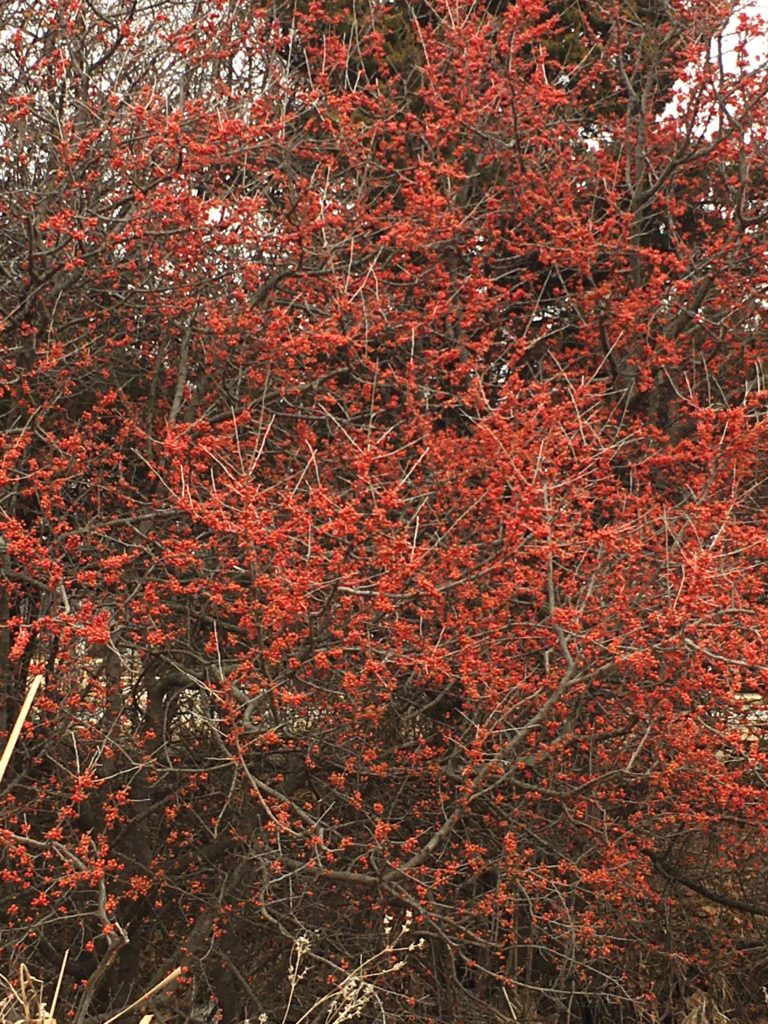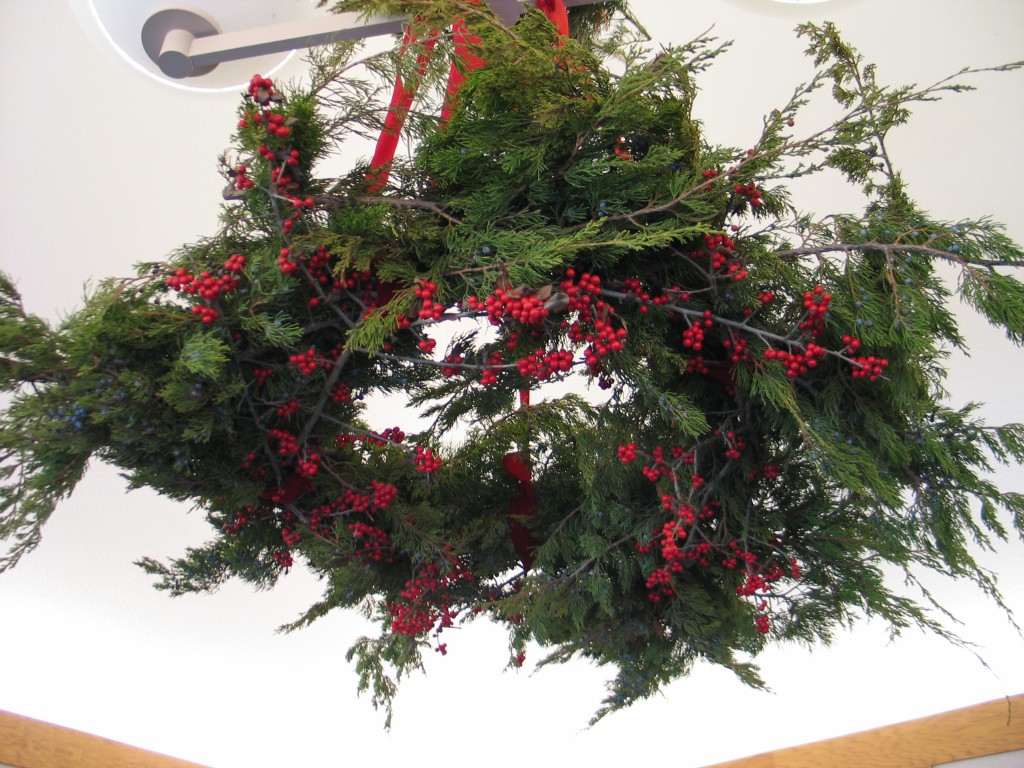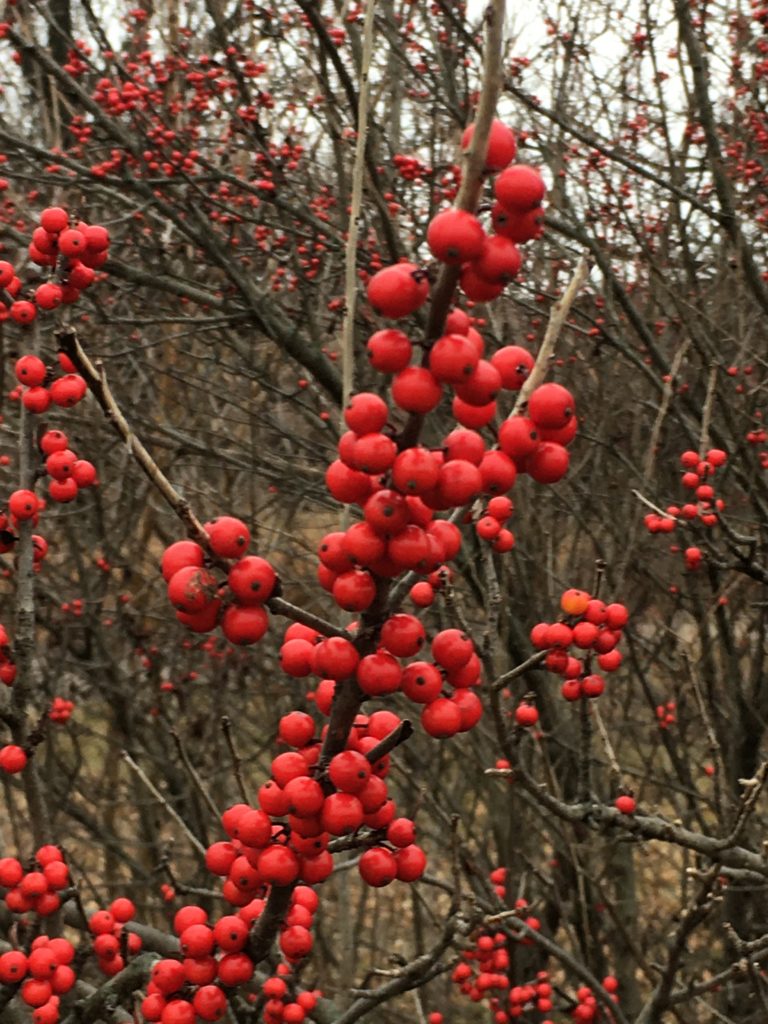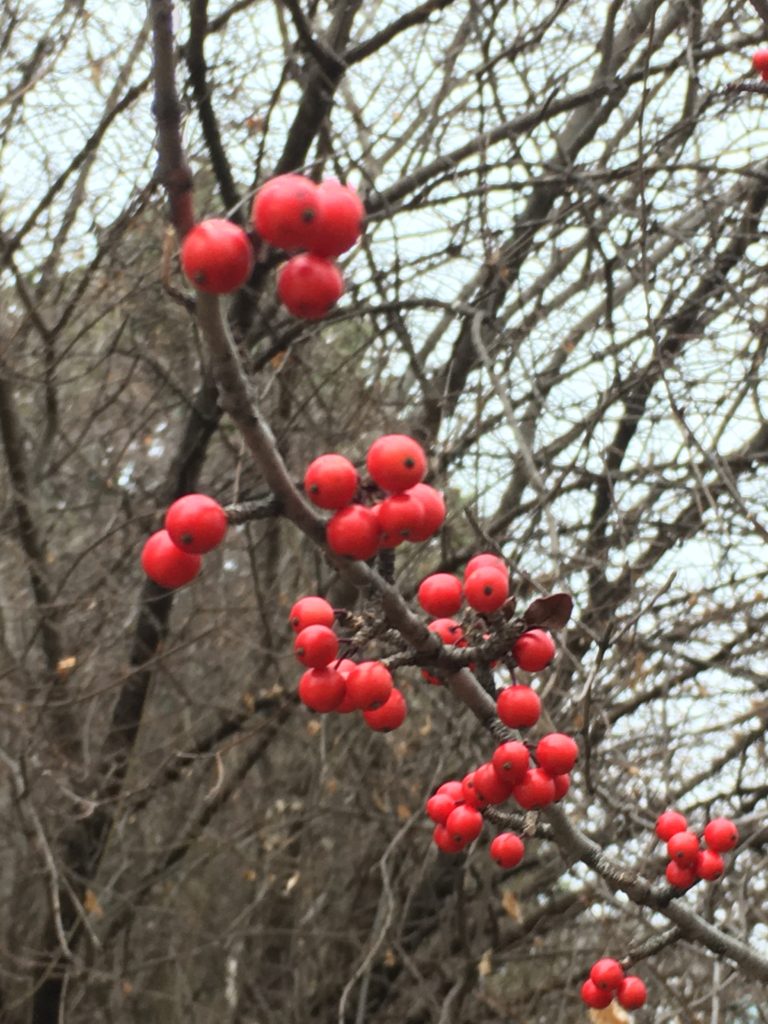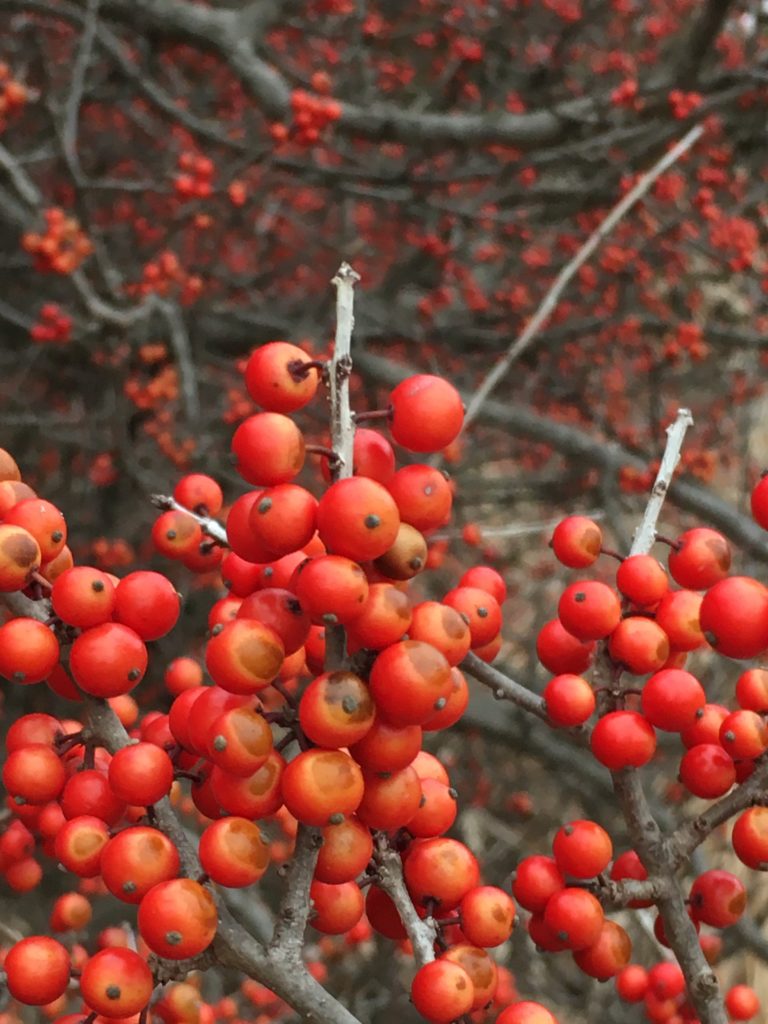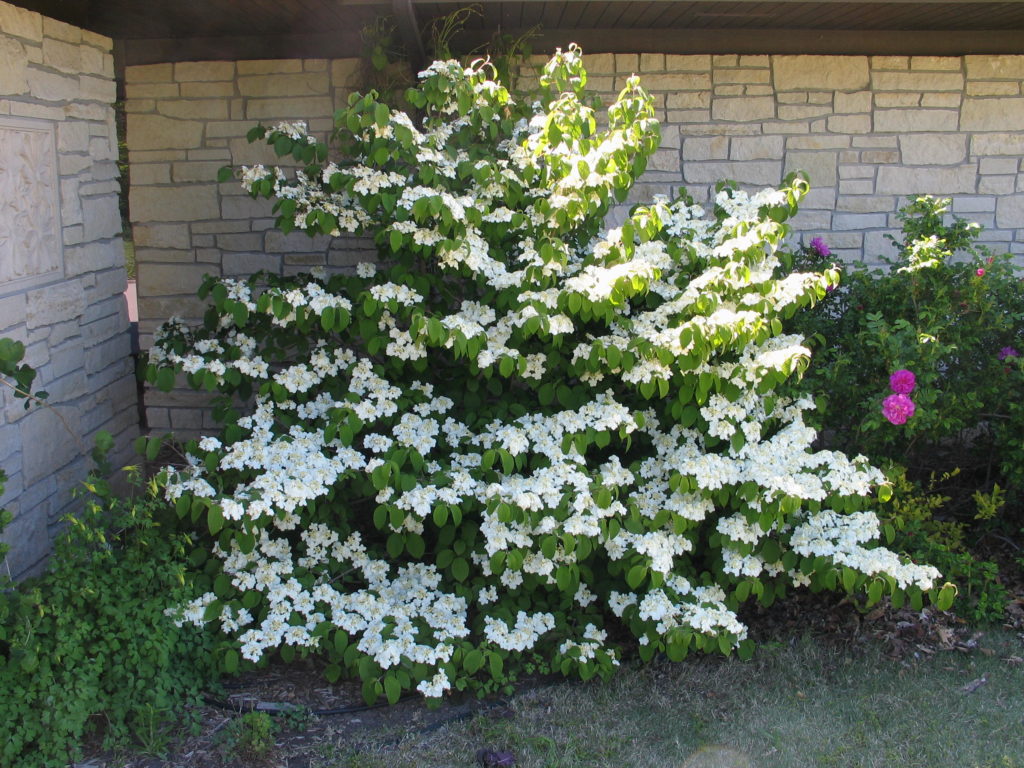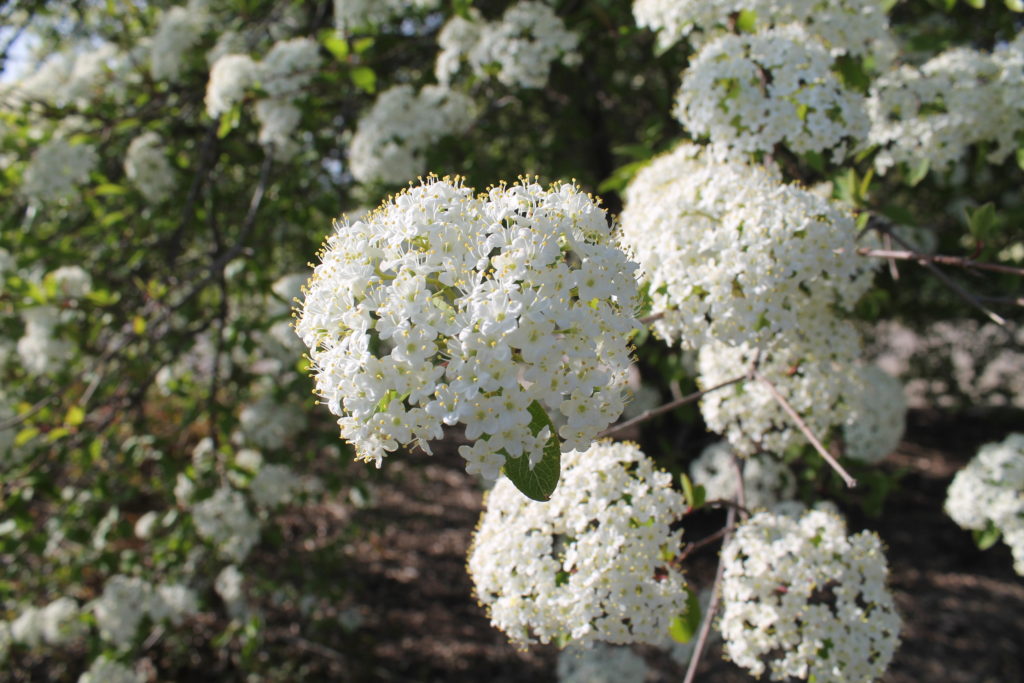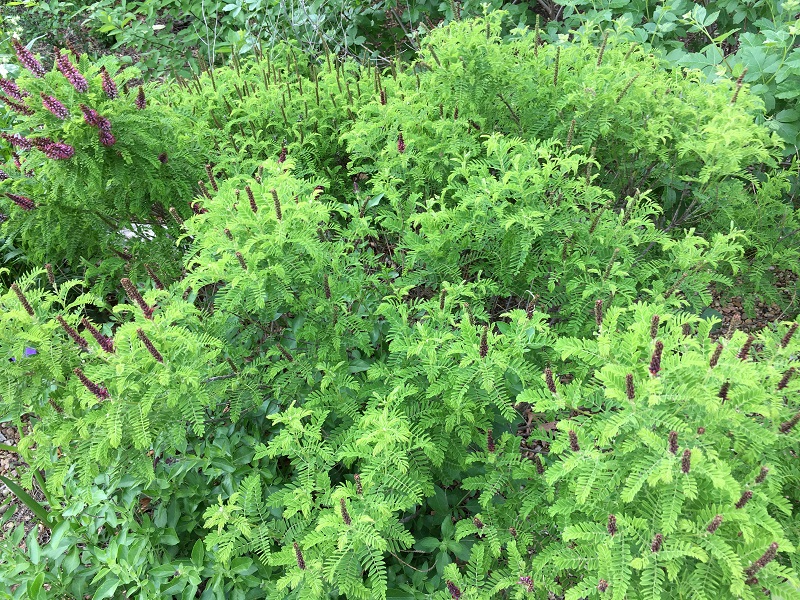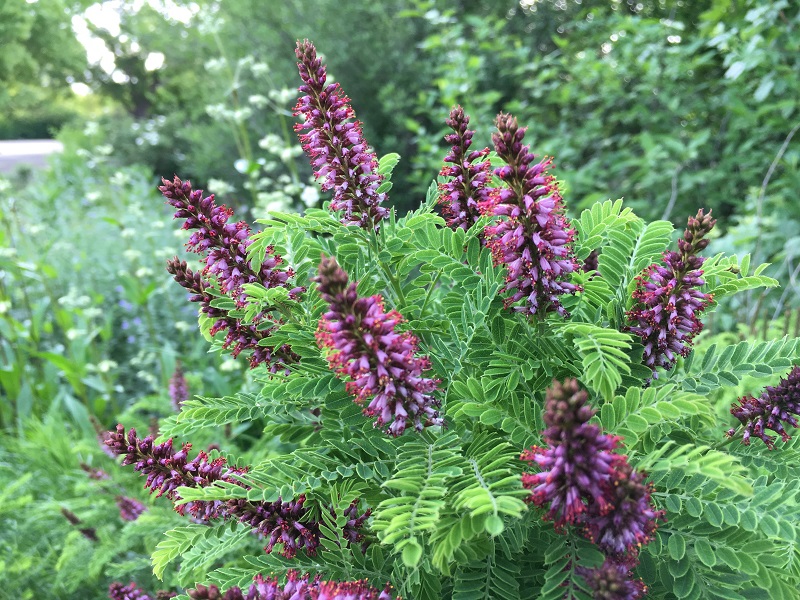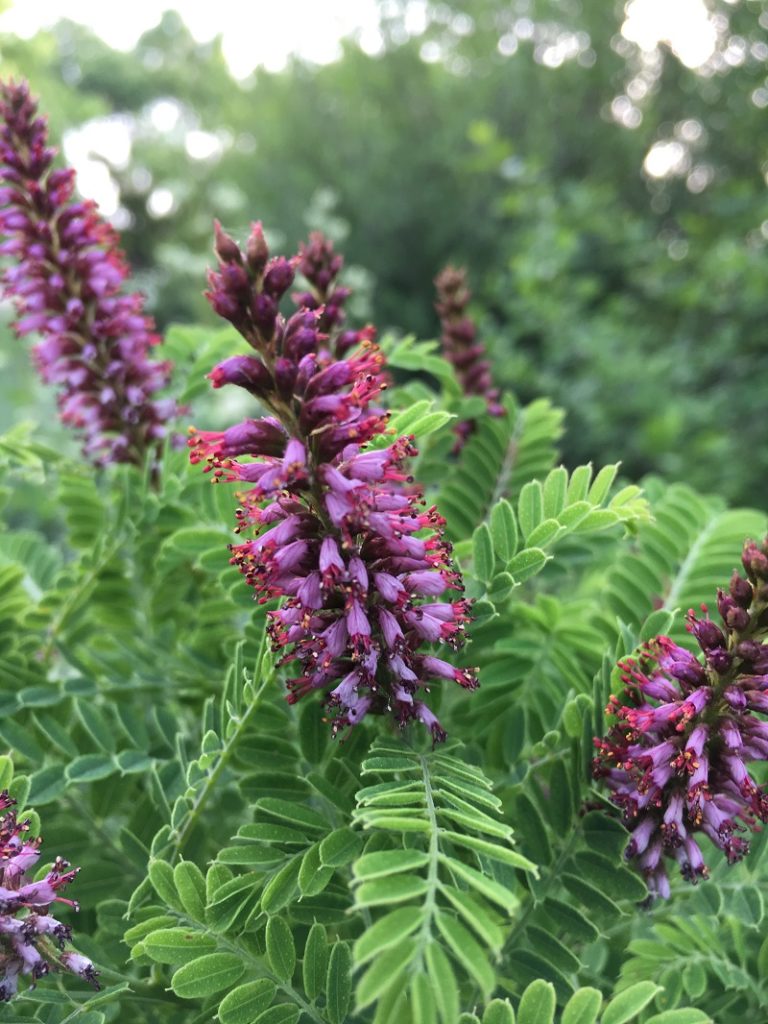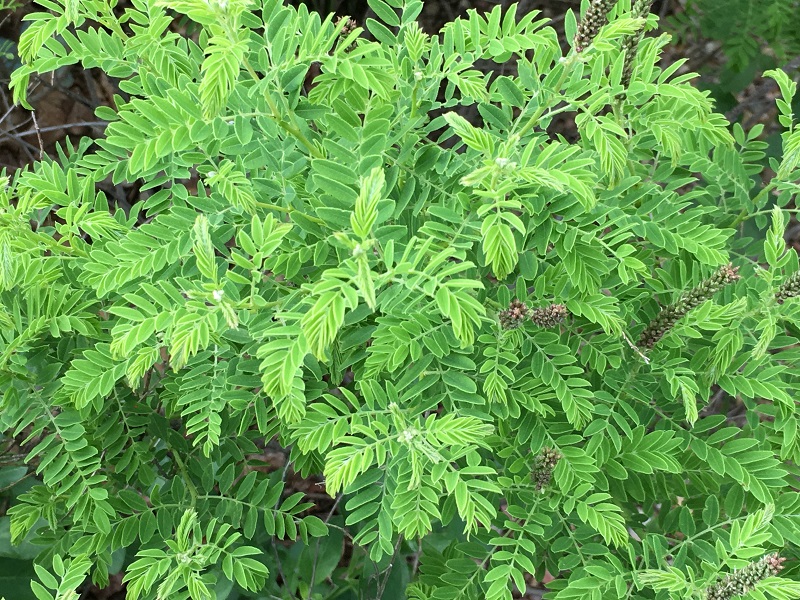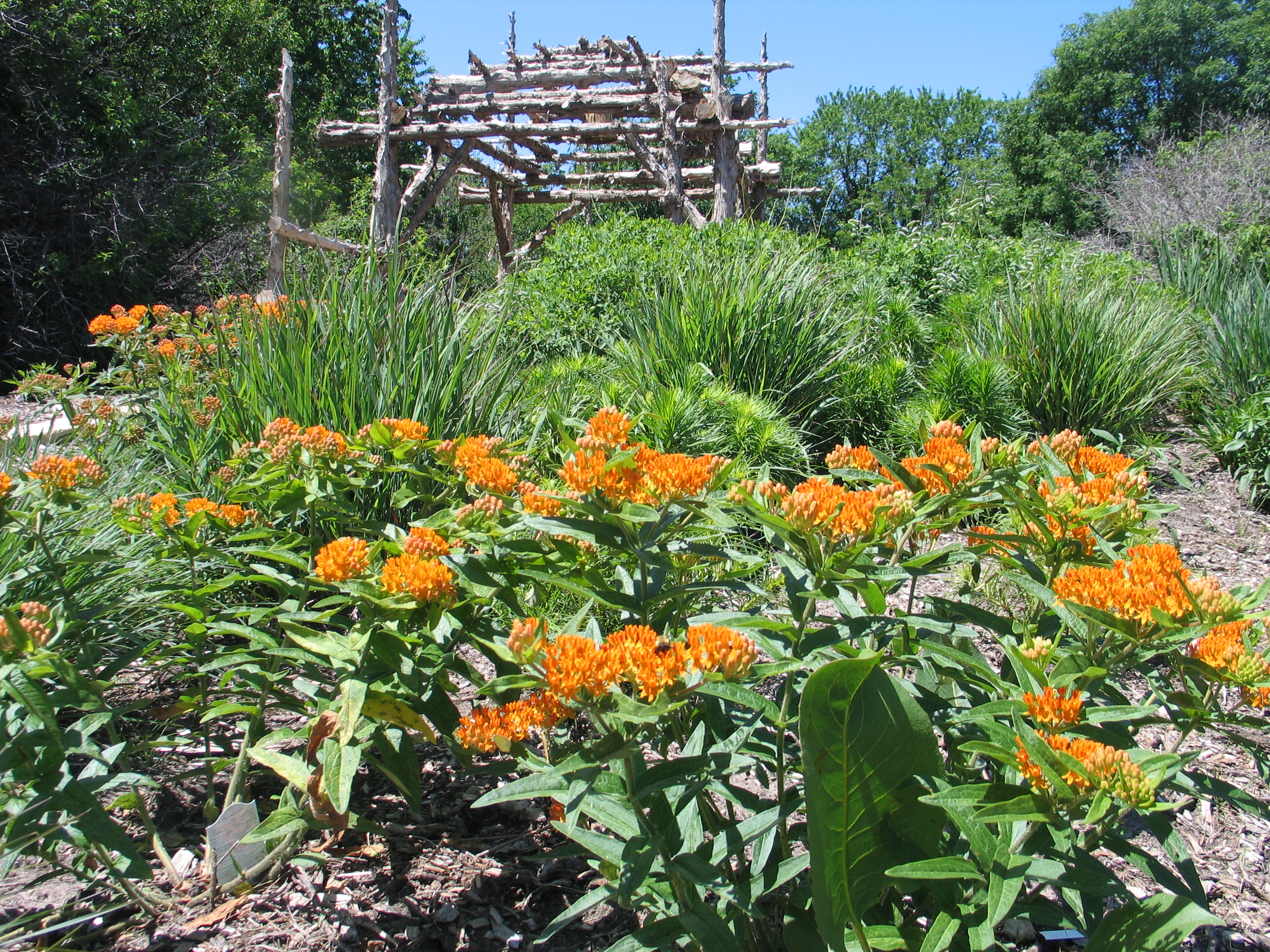Originally posted on May 1, 2019
This is such an important topic and such a huge problem that we thought it is worth sharing again.
Several years ago, I noticed something disturbing was happening to our prairie reconstruction. Small little trees were popping up throughout the original prairie planting. I could not figure out where they were coming from, but they looked like pear tree saplings. It wasn’t until I saw a large white blooming Callery pear tree in the spring that it all came together.
Callery Pear
Although the flower clusters are beginning to fade, Callery pear’s white blooms are most obvious in the spring. We planted them for their explosion of spring blooms and nice fall color, but this ornamental tree has become highly invasive. It threatens native wildlife habitat and has become a nuisance for private and public landowners.
This once favorite tree was planted extensively throughout the U.S. The Callery pear – also referred to as Bradford pear – formed a nice pyramid to rounded shape. The vertical limbs made it a nice median and street tree as well, ultimately reaching 30 to 40 feet tall and 20 -30 feet in spread. This Chinese native was a harbinger of spring for decades with its prolific white blooms. An added bonus was its reddish-purple fall color.
Despite all those positives, these trees have become problematic. This non-native, flowering tree was assumed to be sterile, but it is not. It now cross-pollinates with other cultivars of Callery pear to produce hybrid offspring. The fruit is ingested by wildlife and birds that spread the seeds across the countryside and into your yards. It is aggressively displacing native vegetation, causing economic and environmental damage.

The message to property owners is to remove the trees now while you can easily identify them in bloom. We need to keep them from spreading to native areas. It doesn’t hurt my feelings to see them go, because they are a weak-wooded, thorny mess.
Native alternatives to Callery Pear:
- Eastern Rudbud (Cercis canadensis)
- Serviceberry (Amelanchier arborea or Amelanchier ‘Robin Hill’)
- American Plum (Prunus americana)
- Chokecherry (Prunus virginiana)
- Blackhaw Viburnum (Viburnum prunifolium)
- Rusty Blackhaw Viburnum (Viburnum rufidulum)
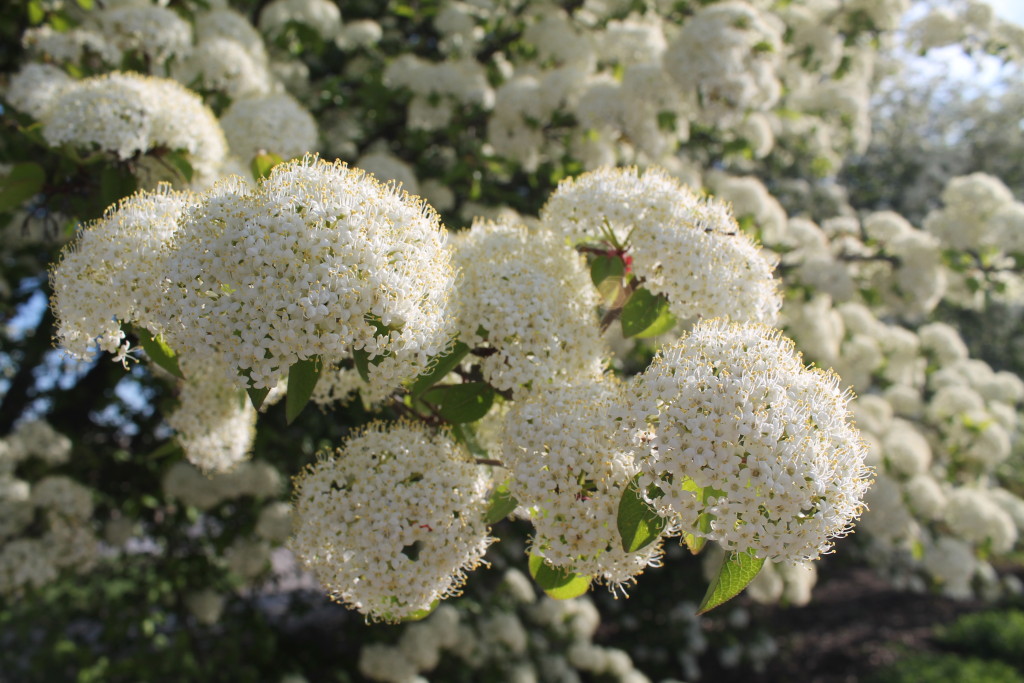
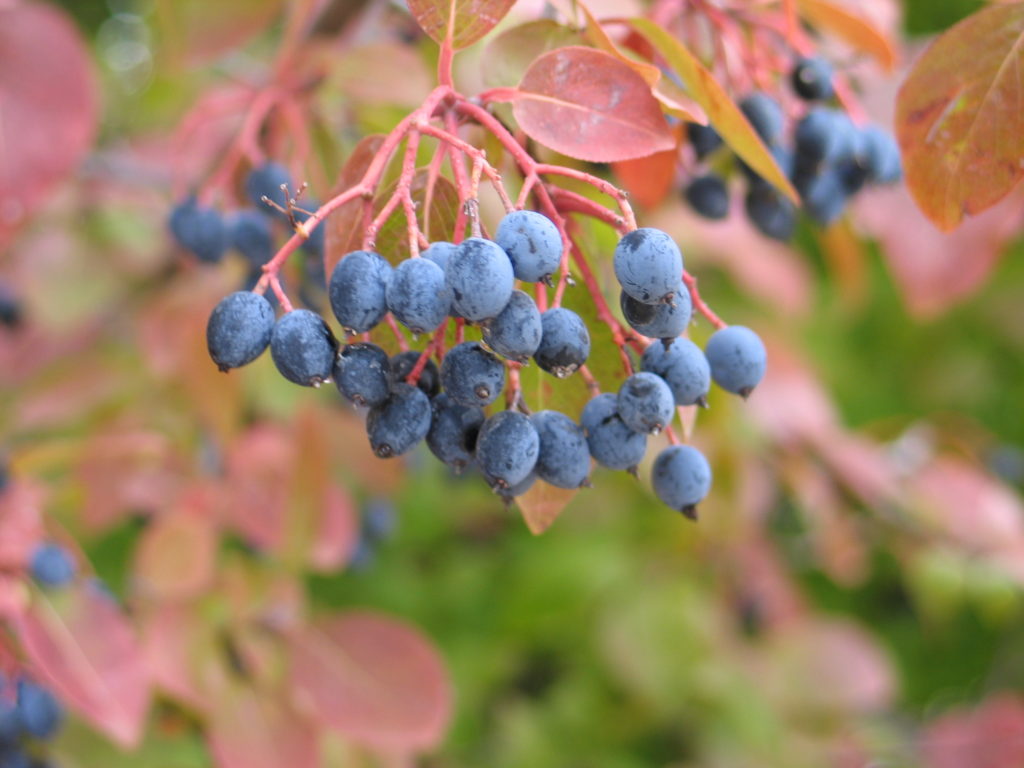
We have cut down the culprit, but still have a bunch more saplings to remove this summer. There was one more larger tree that was cut down near the Visitor Center. We will continue to eradicate these unwanted invaders in our prairies. It will take time but I believe we can get the upper hand. I would encourage you to remove them in your landscape as well and replace them with native trees. Callery pear has no place in the landscape anymore.
Here is additional information on Callery pear trees from the Kansas Forest Service.



